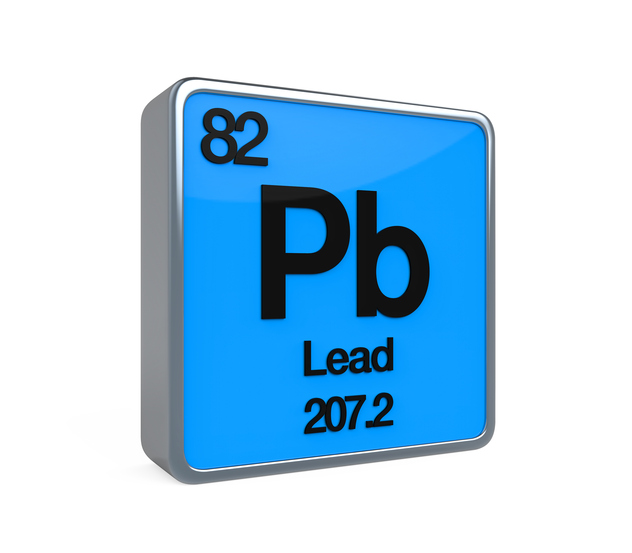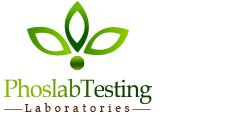- HOME
- Services
- Environmental Testing
- BTEX Testing Services
- Volatile Organic Compound (VOC) Testing
- Total Recoverable Petroleum Hydrocarbons Testing and Analysis
- Pesticide Testing and Analysis
- Polycyclic Aromatic Hydrocarbons Testing
- Hazardous Waste
- Wastewater Testing
- Soil Testing
- TCLP Testing
- SPLP Testing
- RCRA Metals TCLP Analysis
- Agriculture Testing Laboratory
- Brownfield Testing Laboratory
- Mineral Testing Laboratory
- Chemical Testing Laboratory
- Field Sampling
- Phoslab Environmental Consulting
- Resources
- About Us
- Contact Us
- PhosBlog
RCRA Metals TCLP Analysis
We analyze samples for Arsenic, Lead, and other heavy metals
 Phoslab Environmental Services has made its name in Central Florida by providing accurate environmental laboratory testing, which plays a significant role in helping companies and other industry players safely handle hazardous waste. TCLP testing is a key component and one of its most important applications is in testing for RCRA 8 metals. These elements are naturally occurring but they are recognized as dangerous for people and the environment.
Phoslab Environmental Services has made its name in Central Florida by providing accurate environmental laboratory testing, which plays a significant role in helping companies and other industry players safely handle hazardous waste. TCLP testing is a key component and one of its most important applications is in testing for RCRA 8 metals. These elements are naturally occurring but they are recognized as dangerous for people and the environment.
What are RCRA metals?
The Resource Conservation and Recovery Act of 1976 is the main regulatory act governing the handling of toxic substances, determining methods for their recovery and disposal. The RCRA identifies eight heavy metals that are especially dangerous to water and waste water because they are toxic in even small amounts. Known as the RCRA 8 Metals, they include:
- Arsenic – A naturally occurring element often used to preserve wood but is also found in some medical and veterinary products. Exposure has been associated with carcinogenic and systemic health problems affecting all organ systems.
- Barium – Often used as barium compounds formed by combining it with chemicals such as oxygen, sulfur, or carbon. Barium compounds are used in various industries, from drilling to medicine. Exposure has been linked with high blood pressure, muscle twitches, gastrointestinal problems, kidney damage, and even fatal respiratory failure.
- Cadmium – Found as a mineral and is a component in soils and rocks. It is commonly extracted during the processing of other metals. Cadmium is often used in the production of batteries, pigments, plastics, and metal coatings and it does not break down readily. Exposure can lead to problems with pulmonary function, decreased olfactory senses, and osteoporosis.
- Chromium – Present in several distinct forms based on oxidization state. These tasteless and odorless compounds can be used in steel production, pigments, chrome plating, and preserving wood. They have been linked to health effects including dermatitis, organ failure, and cancer, with the severity depending in part on the oxidization state.
- Lead – Known for its blue-gray coloring, this metal is often released in mining, manufacturing, and burning of fossil fuels. The current main source of lead exposure is inhalation or ingestion of contaminated food, water, and paints. Exposure can lead to impaired intelligence, neurobehavioral development, and fertility.
- Mercury – Exists in nature in three different states – elemental, inorganic, and organic – with each having its own toxicity profile. All humans and animals are exposed to all of the forms of mercury but chronic exposure is often through dental work and fish consumption. All forms of mercury are toxic and adverse effects include gastrointestinal toxicity and neurotoxicity.
- Selenium – Grayish blue crystal in its natural form but typically found in rock or gas compounds in the environment. Selenium is used in common products like dandruff shampoo and nutritional feed for livestock and water-soluble forms easily infiltrates surface water. A low level of selenium exposure is necessary for proper body function but excessive exposure can lead to problems like selenosis, in which feeling in the arms and legs is lost.
- Silver – A basic element found in soil and water. Silver is used in jewelry and dental findings, as well as electronic equipment and processing of photographs. Excessive exposure can cause discolored skin, breathing problems, and allergic reactions.
Regulatory limits for TCLP metals
The TCLP follows the following RCRA metal limits:
- Arsenic – 5.0 mg/L
- Barium – 100.0 mg/L
- Cadmium – 1.0 mg/L
- Chromium – 8.0 mg/L
- Lead – 5.0 mg/L
- Mercury – 0.2 mg/L
- Selenium – 1.0 mg/L
- Silver – 5.0 mg/L
The concentration of these metals in water, soil, and discharge determines how the waste may be disposed of under the regulation.
Do I really need metal analysis?
For anyone performing services or handling products involving RCRA metals, TCLP metal analysis is the recommended course to ensure compliance. As discussed in further detail at What is TCLP Metals Test: Is it Really Necessary?,
“All industries have to adhere to regulations set by governmental entities, to ensure that the waste they are processing is not harmful to the environment. The waste disposal regulations are set by EPA (Environmental Protection Agency) and non-compliance of these regulations could result in heavy fines and even closure of waste producing facilities. Therefore TCLP testing is a requirement for all industries that produce hazardous waste materials.”
TCLP testing of RCRA metals in Florida
Phoslab Environmental Services employs expert staff to aid clients who rely on TCLP testing to identify RCRA metals and priority pollutant metals. Our experienced personnel are committed to providing fast and accurate results that you can rely on. Call today to learn about our metal testing services.
Additional “RCRA Metals” Resources:
- NCBI, Heavy Metals Toxicity and the Environment, https://www.ncbi.nlm.nih.gov/pmc/articles/PMC4144270/
- EPA, Toxic and Priority Pollutants Under the Clean Water Act, https://www.epa.gov/eg/toxic-and-priority-pollutants-under-clean-water-act
[/vc_column_text][/vc_column][/vc_row]
